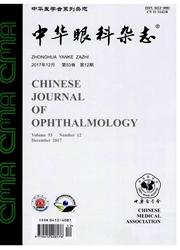

 中文摘要:
中文摘要:
目的探讨流式细胞分析技术、免疫荧光及^3H—Thymidine分析对大鼠胚胎视网膜前体细胞性质及其体外增殖进行鉴定的可行性。方法来源于19d胚胎大鼠视网膜的视网膜前体细胞,使用流式细胞分析及免疫荧光技术从数量及形态上对细胞性质进行鉴定。采用无血清培养基体外培养,通过^3H-Thymidine分析、形态学观察及统计学分析,研究细胞增殖情况。结果从胚胎大鼠全层视网膜分离出的原代视网膜前体细胞,流式细胞分析结果显示:培养0d时,22.23%的细胞神经上皮干细胞蛋白(Nestin)呈阳性表达,16.04%的细胞Sox-2呈阳性表达,19.66%的细胞钙结合蛋白呈阳性表达,其余终末视网膜细胞标记物(胶质纤维酸性蛋白、CD90、视紫红质、C反应蛋白、突触前膜列阵蛋白)均呈极微量阳性或阴性。免疫荧光结果显示大部分细胞及细胞球(〉90%)Nestin呈阳性表达。培养6d后,流式细胞分析显示43.36%的细胞Nestin阳性,免疫荧光显示Nestin及胶质纤维酸性蛋白呈阳性。连续4d^3H-Thymidine分析及形态学观察、统计学分析原代视网膜前体细胞初期增殖良好。结论流式细胞分析、免疫荧光及^3H—Thymidine等免疫学技术可很好的对视网膜前体细胞性质及其增殖情况进行鉴定。大鼠胚胎原代视网膜前体细胞表现出神经干细胞的特性,根据检测手段不同,阳性结果不同,其原代视网膜前体细胞体外培养初期增殖良好。
 英文摘要:
英文摘要:
Objective To characterize embryonic rat retinal progenitor cells (RPCs) by flow cytometry (FACS), immunofluoresence and ^3 H-Thymidine assay in vitro. Methods RPCs were prepared from the retina of embryonic day 19 Spragne Dawley rats and were cultured in DMEM: F12 medium with N2- supplement, epidermal growth factor ( EGF), basic fibroblast growth factor (bFGF) and leukemia inhibitory factor (LIF) for 0 to 4 days. Cell proliferation and cluster formation were quantified by ^3H-Thymidine assay and morphometric analysis, respectively. Antibodies used to characterize the RPCs included markers for neural progenitors (Nestin and Sox-2), astrocytes (glial fibrillary acidic protein [ GFAP] ), horizontal cells (Calretinin), ganglion cells (CD90) , rods ( Rhodopsin), biopolar cells (PKC) and amacrine cells (Syntaxin) bythe useofFACS. Results In primary cells, 22.23%, 16.04% and 19.66% of cells were found to express Nestin, Sox-2 and Calretinin, respectively. GFAP, CD90, Rhodopsin, PKC, Syntaxin were not detected or trail. Meanwhile, more than 90% cells were Nestin positive by immunofluorescence. After 6 days culture in vitro, 43. 36% cells express Nestin by FACS. Nestin and GFAP were expressed by use of immunofluorescence. There was significant proliferation of RPCs within the first 4 days as evaluated by ^3 H-Thymidine assay. Conclusions The results demonstrate that combine FACS, immunofluoresecence and ^3H-Thymidine assay together could characterize RPCs. RPCs proliferate well at the early period of cell culture.
 同期刊论文项目
同期刊论文项目
 同项目期刊论文
同项目期刊论文
 期刊信息
期刊信息
